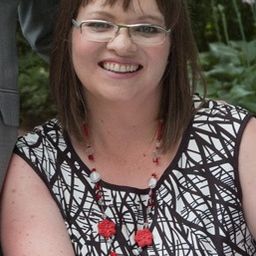16.10 “The Lure of the Local”: Unpacking Colville House, Sackville, New Brunswick
My Session Status
While Alex Colville’s artworks reside in private and public collections around the world, Colville himself remained grounded in primarily in Sackville, New Brunswick, and later in Wolfville, Nova Scotia. Colville (1920–2013) cited the fact that his immigrant father “experienced terrible uprootedness. Every time you move, you lose your friends, you lose your known environment, you undergo what is in a certain sense a real trauma…. I like being where I know what is going on.” Using the example of Colville House, a public institution on the Mount Allison University campus, managed by the Owens Art Gallery, I examine how site specificity can be deployed to promote critical pedagogy.
In 1948, following the completion of his fine arts studies at Mount Allison and his work as a war artist, Colville moved to Sackville and began teaching in the Department of Art at Mount Allison. One year later, he and his wife Rhoda purchased a house adjacent to the school, one in “very bad physical condition,” and so Colville undertook extensive renovations. Notably, the house’s transformation had a decisive effect on Colville as an artist. In 1951, he completed what he called his “first good painting,” Nude and Dummy, the interior scene located in his home house’s attic, thereby signalling Colville’s initial painterly deployment of a unified perspectival scheme, one ultimately informed by his renovation work, and so he “found himself” in this work. In 2009, the residence opened as Colville House, a cultural institution, more specifically a “portal” designed to explore the artistic contributions of Alex Colville and the ideas embedded in his artworks, open to the public in July and August. In 2012, while at Mount Allison, I organized “FINH 4091: Unpacking Museums,” an art history seminar course that explored artist interventions in historic sites and required students to investigate the institutional history, development and programming, and potentialities for Colville House. Given that the House remains closed during the school term, this course offered a unique opportunity for students to visit, hold classes and lectures in this space, and engage with its interior and history on their terms. The course design, site-specific focus, and associated activities collectively encouraged students to develop critical insights regarding one popularly known as one of the university’s most distinguished graduates and Canada’s Painter Laureate, how such accolades were bequeathed and, ultimately, how artists, curators, and art historians might move beyond the dominant narrative(s) implied in and by this particular site with students proposing, in the context of their final research presentations and papers, the mounting of exhibitions and artist-history museum interventions aimed at highlighting different facets of class, race, and gender. Not only did this approach sharpen my awareness of the benefits of calculated mergers of site specificity, over the past four years, I have developed similar explorations of local heritage sites at different universities that I have taught at across Canada, thereby cultivating exciting opportunities to teach critical heritage studies.
